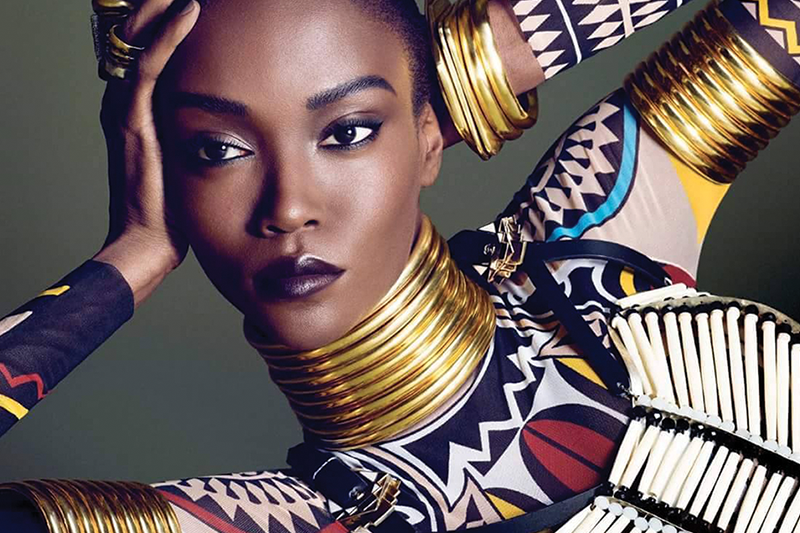Fashion is a phenomenal that changes from season to season across space, and designers are chiefly influenced by many things from nature to music, and to art. African art styles have long been influencing the runway, from simple tribal patterns to the intricate representations of African people and culture. Contemporary African art styles have steadily changed, and in turn shaped the perception of the fashion world about it.
Original African techniques meet high fashion
There has been an array of amazements over many designers who have visited Africa by the techniques used in creating fabrics or art using block printing and beading. Contemporary African art embraces these techniques, interestingly, these traditional methods can not be faked in the fashion world.
Lately, more brands are shifting from simply putting Maasai beads onto a t-shirt, but are now infusing original techniques into their clothings and designs. With this, it will parade garment integrity and originality, thereby, making a positive representation of Africa and African art. Across boards, designers are now leveraging on African arts for inspiration for their designs with the belief there are still some crafts that have not been explored in terms of (Western) fashion.
Mixing couture with societal issues
African prints have been a style staple, but Nigerian-born Duro Olowu is changing the narrative on how these prints are used by mixing them with couture fabrics and silhouettes. Olowu finds it interesting to note the level of sophistication that African people use when mixing European fabrics with indigenous culture.

Many times, the fashion projects of top designers that include African fabrics, textiles, and designs have more to them than simply making beautiful clothing.
Showcasing the uniqueness of cultures
Prior to the explosion of the contemporary African art and designs, several fashion houses released African-inspired lines that consist primarily of animal prints and tribal patterns. Meanwhile, designers that used ‘African-inspired’ forgot that Africa is a continent and not a country. There are many African countries like Ghana, Kenya, South Africa, Mali, Nigeria, and others that inspire designs. It is imperative for designers who use fabrics from these countries to be specific when they are using Kente cloth from the Ashanti people of Ghana, Ndeble patterns from the Xhosa in South Africa, or the Aso oke fabrics of the Yoruba in Nigeria. Hence, there is always a need to specify the textiles and fabrics being used for more exposure to the world about unique traditions from African fashion designers and artists.
_______________________________________________________________________
Read about:
Eritrea Traditional Wedding Styles
Jeremy Scott & His Muse Karen Elson Talk Fantasy, Friendship, & The Joy Of Fashion
_______________________________________________________________________
Change in traditional views
African designers are so much embracing their root that they really want to use African fabrics and textiles to subvert traditional Western view of what African art and fashion really is. Designers like, Millie Collines, Lisa Folawiyo, and Loza Maleombho have all utilized traditional fabrics and prints in their collections, but with focus on modern silhouettes.
On a good note, transforming African fabrics into high fashion allows the world to see African fashion and culture in a different light. The dual focus of many African fashion brands is to promote their label while bringing the African culture to the awareness of the Western world.
Job creation

Creation of jobs is one of the biggest benefits of African art on African fashion. This is hinged on the fact that fashion brands always want original and unique fabrics for their lines, and people with proper skills are always required to get the job done. Due to the high demand for original African techniques by fashion designers, jobs are made available for those who can make fascinating original African fabrics. These fabrics are exported to countries and which in turn boosts the economy of the country manufacturing the product.
Conclusively, African art has greatly influenced fashion in many ways, from changing the style of high-end couture brands to creating more social awareness for fashion designers. The original African fashion techniques of creating textiles richly highlight the culture and tradition of the continent, showing the Western world of design that Africa is a veritable powerhouse when it comes to fashion ingenuity and style.






















Laissez un commentaire